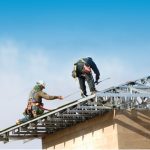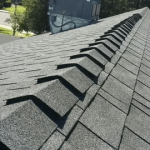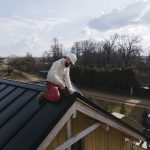Introduction: A New Era for Hawaii’s Building Energy Standards
In 2025, commercial property owners across Hawaii particularly in high-UV, moisture-heavy regions like Wailuku are being pushed to meet stricter energy efficiency codes. While HVAC systems and insulation upgrades often take the spotlight, the real game-changer is up above: your roof.
As more businesses pursue sustainability without gutting their budgets, commercial roof restoration has emerged as a top strategy to comply with updated energy codes while extending the life of existing structures.
Let’s explore how this eco-conscious approach helps meet Hawaii’s 2025 energy benchmarks and why now is the time to act.
Hawaii’s 2025 Energy Code Updates: What You Need to Know
The 2025 energy codes (following IECC updates and localized amendments) require:
- Higher insulation R-values for roof assemblies
- Reflective, cool roof coatings to combat heat gain
- Enhanced storm and UV resistance in coastal zones
- Lifecycle-based maintenance planning
The objective? Reduce building energy consumption by up to 30%. That means even small inefficiencies like worn roofing materials or algae buildup could now lead to noncompliance or increased cooling costs.
Why Roofs Are Now Central to Energy Compliance
The Forgotten Energy Drain
Commercial roofing takes the brunt of Hawaii’s tropical climate solar radiation, heavy rains, salt air, and humidity. Without proactive maintenance, even a small leak or faded coating can:
- Trap heat and raise cooling costs
- Compromise thermal performance
- Cause interior humidity spikes
- Contribute to mold and structural issues
Enter: Commercial Roof Restoration
Instead of full replacements that can cost tens of thousands, commercial roof restoration involves cleaning, repairing, and recoating your existing roof using cool roof materials and seamless membrane systems. The result?
- Boosted reflectivity
- Improved R-value (thermal resistance)
- Extended roof lifespan by 10–15 years
- Compliance with 2025 energy codes without tearing off the entire roof
How Commercial Roof Restoration Supports 2025 Energy Compliance
1. Cool Roof Coatings Reduce Heat Absorption
Restoration often includes applying white or reflective elastomeric coatings that reflect up to 85% of the sun’s rays. This cuts rooftop surface temperatures by as much as 60°F — a huge win for indoor comfort and code requirements.
Key Benefit: Reduced HVAC load = lower emissions = better code alignment.
2. Seam Sealing and Leak Repair Improve Insulation Integrity
Loose flashing or gaps in seams can allow moisture and air infiltration, drastically lowering the building’s insulation performance. Restoration experts use advanced sealants and reinforcement fabrics to correct these issues without needing full tear-offs.
3. Avoids the Pitfalls of Improper Roof Cleaning
Hawaii’s humid climate encourages algae and lichen buildup, but not all cleaning methods are equal. In fact, improper roof cleaning using high-pressure systems can void warranties, damage shingles, and cause micro-tears.
That’s why quality roof rejuvenation services which include soft-washing and eco-safe treatments are often the first step in any commercial restoration project.
Pro Tip: Fresh Roof Maui specializes in safe, non-invasive cleaning methods that preserve your roof’s integrity and warranty compliance.
Key Advantages of Commercial Roof Restoration
Cost Efficiency Over Full Replacement
While full commercial re-roofing can range from $7 to $15 per square foot, roof restoration is typically 50–70% less expensive making it a preferred option for small and mid-sized businesses needing code upgrades without massive capital outlay.
Lower Environmental Impact
By reusing the existing roof structure and minimizing landfill waste, restoration aligns perfectly with Hawaii’s sustainability goals.
Faster Turnaround, Less Business Disruption
Unlike a full roof replacement that may take weeks, most restoration projects are completed in just a few days meaning fewer work stoppages, tenant complaints, or access restrictions.
When Is Commercial Roof Restoration the Right Choice?
Not all roofs qualify for restoration. A thorough roof assessment by professionals — like the team at Fresh Roof Maui is crucial to evaluate:
- Existing roof membrane condition
- Drainage systems and flashing
- Past repairs or coatings
- Moisture intrusion or mold issues
If caught early, most commercial roofs can be restored instead of replaced.
The Role of Roof Rejuvenation Services in Long-Term Energy Savings
Before you restore, you must clean but do it right.
Roof rejuvenation services go beyond aesthetics. They involve:
- Safe removal of algae, moss, and debris
- Inspection for micro-cracks and early damage signs
- Application of protective coatings that restore UV resistance
This prep work ensures that the restoration process not only adheres to code but also lasts longer making your investment stretch further.
Avoid improper roof cleaning services that use pressure washing or harsh chemicals. These quick fixes can damage membranes and compromise energy performance.
Real Example: Wailuku Office Park Cuts Energy Costs by 22%
In late 2024, a three-building office park in Wailuku opted for a full commercial roof restoration after failing preliminary code inspection. Their goals?
- Lower energy bills
- Avoid a costly roof tear-off
- Meet 2025 insulation and reflectivity standards
Within 30 days, Fresh Roof Maui’s team cleaned, sealed, and recoated 18,000 sq. ft. of roof area. The result?
- 22% reduction in monthly cooling costs
- Passed energy inspection with flying colors
- Delayed full replacement by at least 12 years
FAQs About Commercial Roof Restoration
Q1: How long does a commercial roof restoration last?
A: When done properly, restoration can add 10–15 years of life to your existing roof.
Q2: Is restoration eligible for energy efficiency tax credits or rebates?
A: Yes. Many states, including Hawaii, offer rebates for cool roof coatings and insulation upgrades.
Q3: What types of roofs qualify for restoration?
A: TPO, EPDM, metal, and modified bitumen systems are commonly restored if they’re structurally sound.
Q4: Will my business need to shut down during the restoration?
A: In most cases, no. Restoration is much less disruptive than replacement and can often be done in sections.
Q5: Can I combine restoration with solar panel installation?
A: Absolutely. In fact, restoring a roof before solar installation ensures a more durable, weatherproof base.
Final Thoughts: Restore Now, Comply Forever
As Hawaii’s 2025 energy codes become enforceable, commercial roof restoration offers the perfect middle ground cost savings, environmental benefits, and long-term energy compliance.
Don’t wait until you’re hit with fines, insurance hikes, or lost tenants.
Let a local expert like Fresh Roof Maui help you assess your roof and plan a restoration strategy that works for your business and the planet.
Want to know if your building qualifies for restoration instead of replacement?
Schedule a Free Commercial Roof Assessment Today








